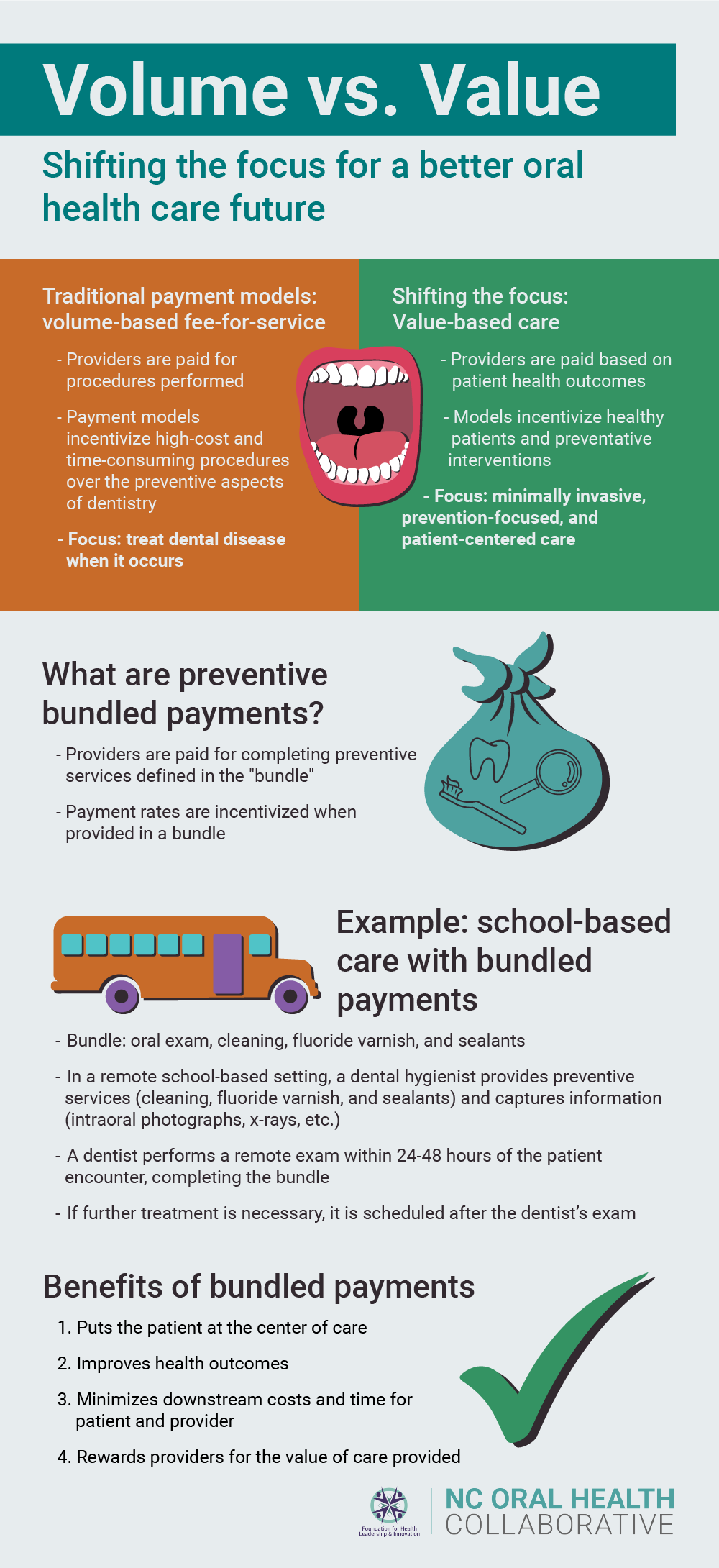Despite significant investments to increase access to oral health care in the United States, the prevalence of decay in children during the past few decades is still concerning. The traditional fee-for-service model (FFS) has been the dominant dental reimbursement system for years. Since FFS pays providers for the amount of service provided, the model rewards for high-cost, complex, and time-consuming procedures. As a result, prevention and maintenance of oral health outcomes are not well prioritized or incentivized in dentistry.
It’s time to truly consider alternative payment models that align oral health outcomes with financial incentives.
What are preventive bundled payments?
Bundled payment models are a type of value-based care, a patient-centered approach that focuses on financial incentives for preventive care and improving health outcomes. In a preventive bundled payment model, specific preventive services are “bundled” together to be completed in one episode of care.
How can we implement this in a school-based setting?
In a school-based setting, the preventive bundle would consist of an oral exam, cleaning, fluoride varnish, and sealants. There is much research indicating that sealants are 80% effective in preventing tooth decay. Therefore, sealants will receive a “bump” in reimbursement to properly incentivize providers to complete them in the same bundle. To properly utilize the oral health workforce, dental hygienists will visit schools to capture data for the exam, perform the cleaning, apply fluoride, and place sealants. The data will then be sent to dentists, who will perform the dental exam asynchronously. (What is asynchronous care? Learn more here.) If the dentist finds that further treatment is needed, the patient will be contacted and scheduled for a follow-up appointment to receive the necessary care.
What are the benefits?
There are many benefits of bundled payment models. By rewarding the value of care provided instead of the volume of care given, we are putting the patient at the center of care and prioritizing measures that prevent expensive oral disease before it happens. Research has linked bundled payments to improved health outcomes, minimization of downstream costs of care, and time savings for both patients and providers.

NCOHC is a program of the Foundation for Health Leadership & Innovation. For more information and to stay up to date, subscribe to the NCOHC newsletter. If you are interested in becoming an NCOHC member, you can also fill out our membership form. It’s free!


